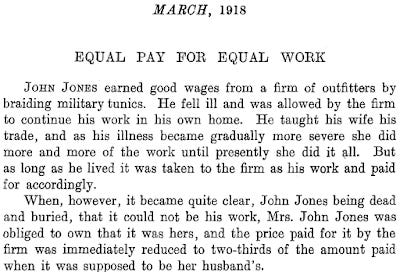Arrow, Edgeworth, and Millicent Garrett Fawcett
There's not much one can say about Kenneth Arrow that hasn't already been said, but there's one personal story that I can add to all the tributes and remembrances.
I met Arrow just once, at a Stanford conference in April 2008 that he and Matt Jackson jointly organized. While everyone else was seated around the outside of a large ring of tables, Arrow was on the inside, directly in front of the speaker. He was 86 at the time.
I was first up, presenting an early version of a paper with Sam Bowles and Glenn Loury on group inequality. Arrow interrupted me within the first couple of minutes – not aggressively at all, just seeking clarification about the information structure. Then, during a coffee break after the talk, he asked if I’d read a piece by Millicent Fawcett on gender wage inequality, published in the Economic Journal in 1892. That’s not a typo – he really meant 1892. I confessed that I hadn't.
Arrow said that Fawcett’s work was extensively discussed in a 1922 presidential address by Francis Edgeworth, but while many were familiar with the Edgeworth lecture, few had bothered to read Fawcett herself.
It’s true. Edgeworth mentioned “Mrs. Fawcett” seven times in his address, and cited three separate pieces by her. His lecture was on “Equal Pay to Men and Women for Equal Work,” and one of papers he referenced was “Equal Pay for Equal Work,” published by Fawcett in 1918. Here’s how the latter begins:

I didn’t realize it at the time, but Dame Millicent Garrett Fawcett was every bit as remarkable as Edgeworth and Arrow, and economics was the least of her accomplishments. I imagine that Arrow saw in her a kindred spirit.



